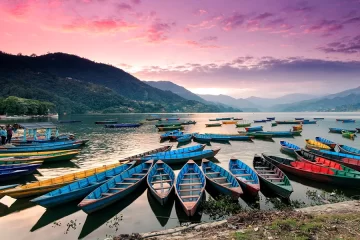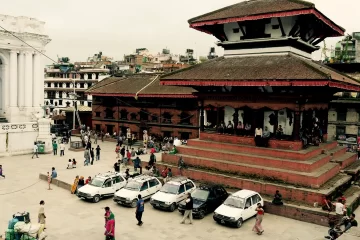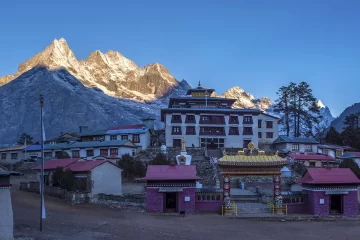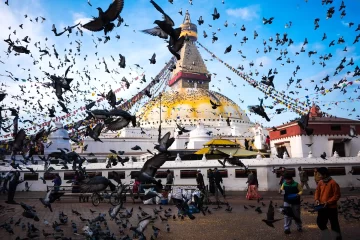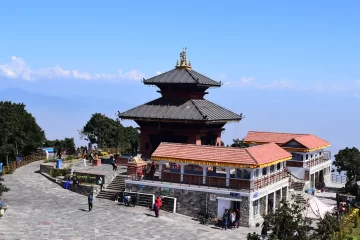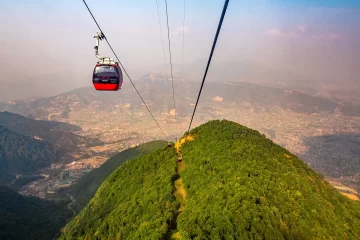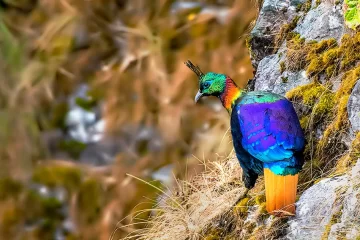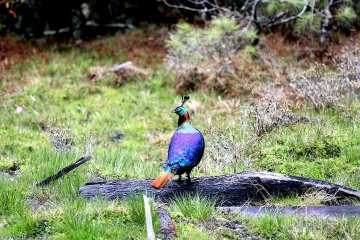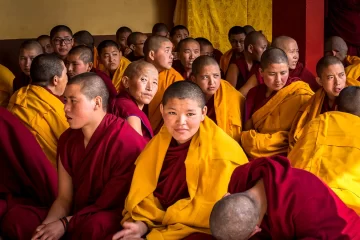Teej Festival: A Unique Cultural Experience in Nepal
Introduction of Teej Festival
The Teej festival is an annual celebration in Nepal. People dedicate the Teej festival to the worship of Lord Shiva and Goddess Parvati. Also, It is a celebration of womanhood and a test of their devotion to their husbands.
The festival falls in Bhadra according to the Nepali Bikram Sambat calendar. And it takes place in August or September, according to the English calendar.
Here, we will explore the history, traditions, and celebrations of the Teej festival.
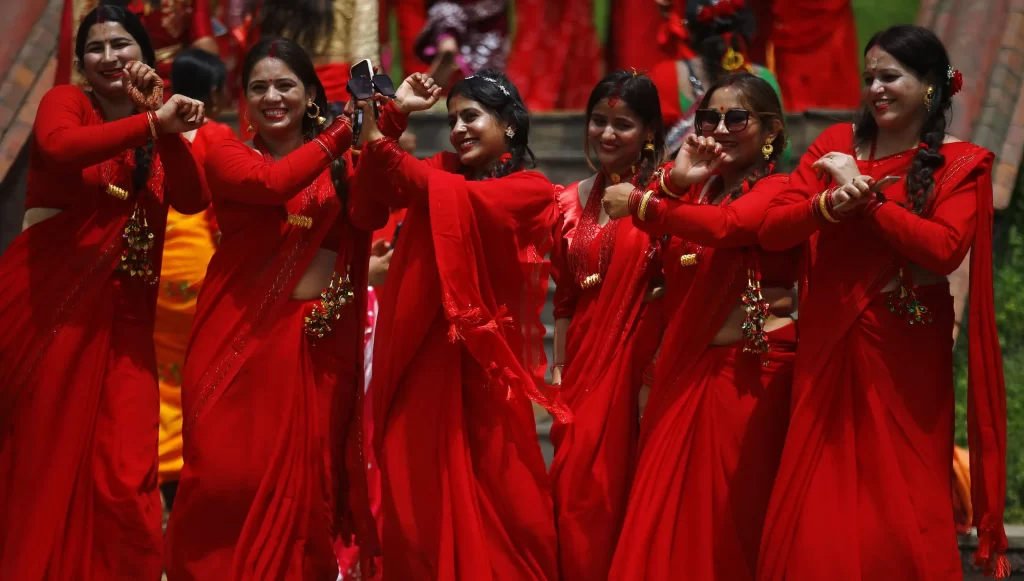
History of Teej Festival
People have been celebrating the Teej festival in Nepal for centuries. People believe that the festival originated in the Himalayan region.
Legends say that Goddess Parvati observed a rigorous fast during this festival. She did it to win the heart of Lord Shiva. Over the years, the festival has evolved from a simple fast.
It has transformed into a grand celebration with various associated rituals and customs.
Today, people celebrate the Teej festival in Nepal and Nepalese communities worldwide.

Fasting during Teej Festival
Fasting is an integral part of the Teej festival. Married women follow a strict fast for twenty-four hours during Teej. They refrain from consuming even a single drop of water during fasting.
People take fasting as a test of a woman’s devotion and love for her husband. During fasting, women dress in red sarees and wear bangles.
They also adorn themselves with henna tattoos called “Mehendi” in Nepal and India. They spend the day praying and singing hymns to Lord Shiva and Goddess Parvati.
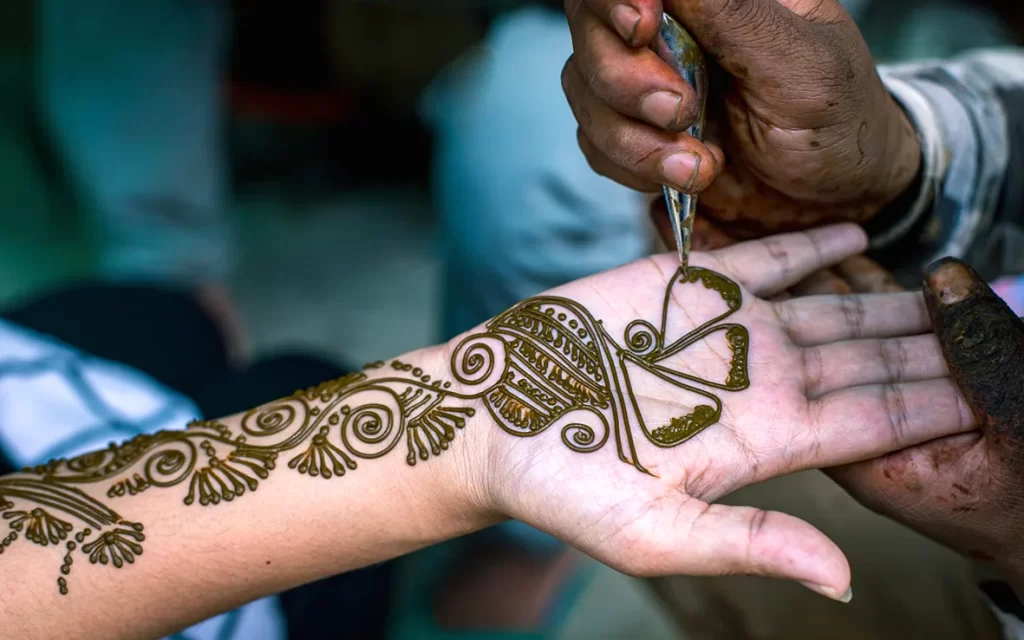
Celebration of Teej Festival
Preparations for the Teej festival start several days before the actual celebration. Women start shopping for new clothes, jewelry, and cosmetics.
On the day of the Teej festival, women gather together. They engage in performing traditional dances and singing folk songs.
As part of the this festival, women perform several rituals. These include bathing in red mud, offering prayers at temples, and lighting oil lamps.
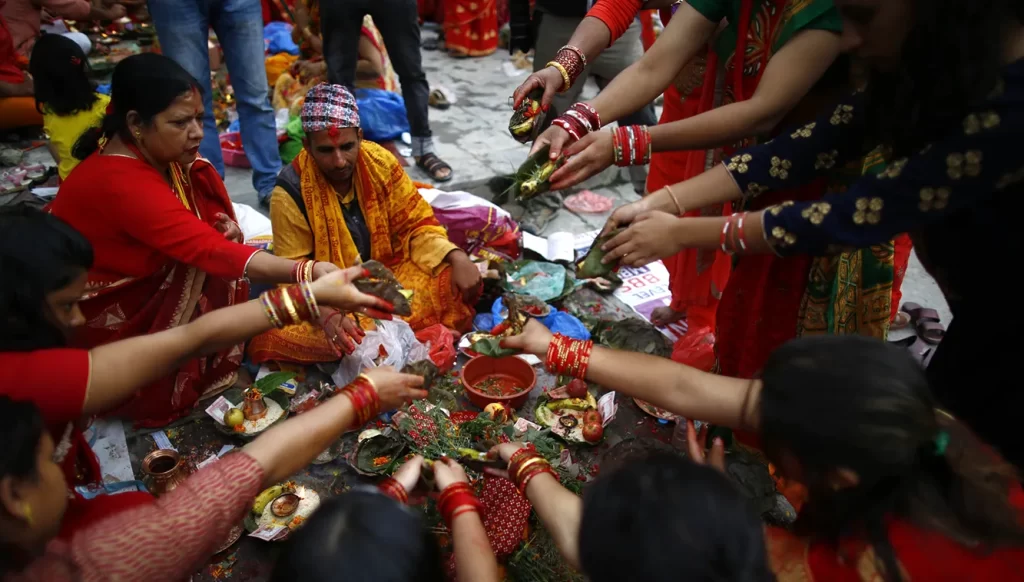
Teej Festival and Women Empowerment
Teej festival has played an essential role in empowering women in Nepalese society.
Over the years, there has been an increase in women’s participation in the Teej festival. The festival has become a symbol of womanhood and their devotion to their husbands.
Teej has also allowed women to showcase their talent and creativity. They express themselves through performing arts and handicrafts.
Foods during Teej Festival
The Teej festival features a variety of traditional foods. Some common dishes prepared during the festival include:
- Dar: A sweet dish made from rice, jaggery, and ghee.
- Malpua: Sweet pancakes made from flour, milk, and sugar syrup.
- Kheer: A rice pudding cooked with milk, sugar, nuts, and spices.
- Sel Roti: A deep-fried rice flour bread that is crispy on the outside and soft on the inside.
- Aloo Dum: Spicy and flavorful boiled potatoes cooked in a rich tomato-based gravy.
- Bara: Lentil patties made from black gram dal, usually served with various chutneys.
- Samosa: Deep-fried triangular pastries filled with spiced potatoes and peas.
- Pulau: Fragrant rice dish cooked with aromatic spices, vegetables, and sometimes meat.
These are a few examples of the traditional foods in the Teej festival. The specific dishes may vary depending on the region. They also depend on personal preferences.
Teej Festival and Tourism
Teej festival has become an important tourism event in Nepal. The festival attracts many tourists who come to experience the unique cultural celebration.
The increase in tourists during this festival has contributed to the economy. Teej festival is also an opportunity to promote Nepalese culture and heritage worldwide.
Contemporary Issues in Teej Festival
Critics argue that the Teej festival promotes gender stereotypes. They highlight that only the women observe the festival.
Yet, various organizations are taking steps to address these gender stereotypes. The challenge is to balance tradition with modern values. Making the Teej festival more inclusive and empowering for all is also necessary.
Teej Festival and Social Media
The Teej festival has become popular on different social media platforms. People celebrate and share it on Facebook, Instagram, and Twitter.
Social media has opened up new avenues for promoting and preserving the festival. But, it challenges the sanctity and authenticity of the festival. Also, the impact of the Teej festival on social media on traditional customs and values is a topic of debate.
Teej Festival in 2023
According to the English Calendar, the Teej Festival in 2023 is scheduled for September 18th. In alignment with the Nepali calendar, it falls on the 1st of Ashwin.
The Teej Festival is of great cultural importance, especially for women. Women come together to observe religious rituals and seek blessings. They pray for marital happiness, the well-being of their spouses, and to purify their bodies and souls. It serves as a platform to honor and celebrate womanhood.
Conclusion
The Teej festival is a unique cultural experience. It embodies Nepalese traditions, values, and beliefs. It is a celebration of womanhood, devotion, and love.
As Nepalese communities spread worldwide, the this has become a cultural identity. It now serves as a symbol of heritage for these communities. Preserving and promoting the Teej festival is essential. It allows future generations to appreciate and cherish this cultural tradition.
FAQs about Teej Festival
What is the meaning of the Teej festival?
Teej festival is a religious celebration in Nepal. People dedicate the festival to the worship of Lord Shiva and Goddess Parvati.
During this time, married women test their devotion to their husbands. They do so by observing a twenty-four-hour fast. They do so by observing a twenty-four-hour fast.
When is the Teej festival celebrated?
The Teej festival falls on the third day of the bright fortnight. It occurs in the Hindu month of Bhadra. It takes place in August or September.
What are the customs and traditions of the Teej festival?
The customs and traditions of the Teej festival encompass various practices. These include fasting, wearing red sarees and bangles.
Participating in the festivities involves applying henna tattoos and performing traditional dances.
Can non-Nepalese take part in this festival?
Married Nepalese women observe the Teej festival. But, non-Nepalese individuals can also take part and enjoy the festivities.
How does this festival contribute to women’s empowerment?
Teej festival has played a crucial role in empowering women in Nepalese society. The festival offers a platform for women.
They can showcase their talent, creativity, and cultural heritage. Furthermore, it has become an opportunity to promote gender equality and celebrate womanhood..
